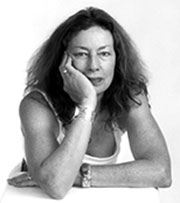In a week, I’ll be speaking to MU Professor Doug Hurt’s “Geography of Tourism and Travel” class. We’ll be discussing an assigned non-fiction book by author Matthew Goodman, “Eighty Days: Nellie Bly and Elizabeth Bisland’s History-Making Race Around the World.” I’ll begin by asking the class what the two women packed in their luggage for their 1889-90 race in opposite directions to best the record of Phileas Fogg—the fictitious traveler in Jules Verne’s novel, “Around the World in Eighty Days.”
Half a century ago, my own journey halfway around the world began. I arrived August 22, 1967 in Bangkok, Thailand, just shy of my twenty-second birthday, and began a three-year teaching assignment as a Peace Corps Volunteer. What did I pack for my extended assignment abroad? What did my fellow PCVs take with them? Were they homesick? Did they keep a journal?
When I asked my PCV friend Harriet Greenfield, she recalled taking a 26” suitcase and what was then called a “train case”— a rectangular case with a handle on the top for her eyeglasses, contact lens supplies, some toiletries and OTC meds. She added, “I probably also took a large handbag/purse that contained something to read, travelers’ checks and the usual necessities. I had some family pictures and a small prayer book since I thought I’d be celebrating Jewish holidays by myself. When our flight stopped overnight in Tokyo, I bought a reel to reel tape recorder and an AM/FM short wave radio.”
Harriet recalls keeping a journal in 5 spiral notebooks and sending aerograms home. “I was quite homesick for a couple of months,” she added, “but family and friends wrote often. One gave me a gift subscription to the New Yorker magazine, so I kept up with hometown theater, etc. The hardest times were the assassinations of MLK and Bobby Kennedy in 1968. I remember both so vividly.”
Another PCV pal, Thom Huebner, wrote: “What a wonderful mental exercise! Peace Corps gave us steamer trunks before we left. But for the life of me, I can’t imagine what I might have filled it with. Clothes? Thai language materials? I may have packed my little Smith-Corona portable typewriter that I had received as a high school graduation gift and that somehow managed to help me get through college. Probably not any books, since I was just coming off of a BA in English literature and didn’t anticipate spending this new, exciting phase of my life reading any more literature (well maybe my copy of the complete works of William Shakespeare and my two-volume collection of American literature, all of which I still have in my SF home office). Besides, we were told we would be getting book lockers when we arrived at our sites.
“In Tokyo on the way there, I bought a small cassette tape recorder-AM/FM radio—Were they even invented back then?—but didn’t keep a diary with any regularity. What I really missed was some aged Wisconsin cheddar cheese. When mother offered to send me some, I warned her that it might be confiscated by Thai immigration. So, she mailed some in a package surrounded by paperbacks and declared it as books. Several months later, an oil-soaked, malodorous package was presented to me by a local postal clerk who said curtly, “It says ‘books’.”
As for me, I took a set of white American Tourister luggage (sadly, without wheels!) packed with summer clothing, some toiletries, family pictures, a tape recorder, music cassettes, and blank recording tapes. Interestingly, I did keep a journal the first year, but then abruptly stopped. Mother kept all of my newsy aerograms and returned them later, minus the stamps. I missed peanut butter, hot showers, fall and winter, and the smell of a real Christmas tree.
Nellie Bly and Elizabeth Bisland raced pell mell across the globe in the late 19th century. That world had profoundly changed by the time my Baby Boomer Peace Corps group left home for two years during the Vietnam War. I’ll be eager to learn what Dr. Hurt’s Gen-Z geography students say they would pack for a similar journey around the world today.








Facebook Comments